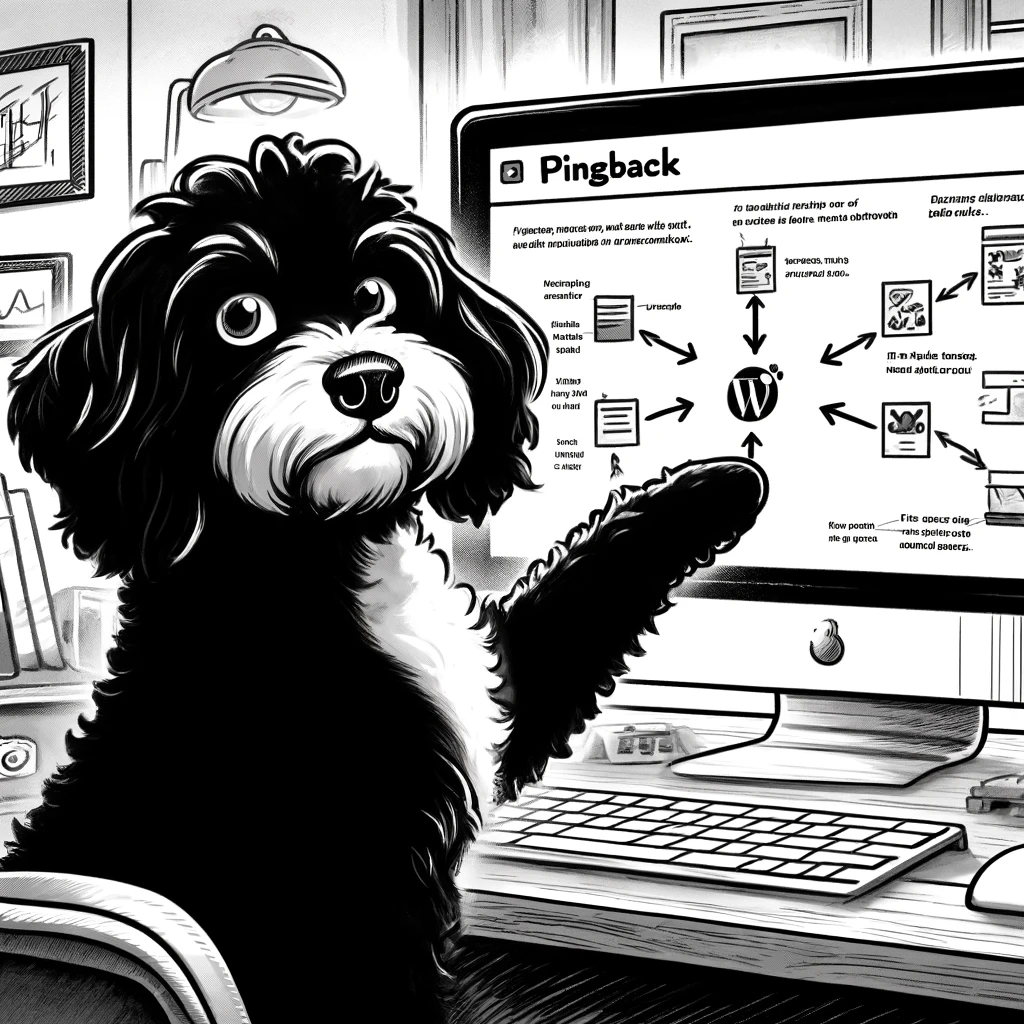Understanding Pingbacks in WordPress
In the realm of WordPress, pingbacks are for fostering discussion and linking between blogs. They serve as notifications to bloggers when their content is referenced by other articles, playing a significant role in the platform’s comment system.
The Basics of Pingbacks
Pingbacks are automated notifications that WordPress sends out when a blog post links to another. These are not just mere links; they are a means for websites to communicate. A pingback effectively informs the original article that another blogger has found their content valuable enough to create a connection. This system enriches the discussion surrounding a post and can influence a site’s SEO.
How Pingbacks Work
When a WordPress blog includes a link to another blog that has pingbacks enabled, the referencing site sends an XML-RPC (Remote Procedure Call) request to the linked site. If the request is accepted, the pingback appears in the comments section of the linked article, typically formatted with the URL of the referring post. Depending on the theme and settings, the appearance varies, but the functions.php file may be used to customize pingbacks.
Pingbacks Versus Trackbacks
Although similar in purpose, pingbacks and trackbacks have distinct differences. Unlike pingbacks, trackbacks are manual notifications one must send to another blog. Trackbacks also offer a short excerpt of the content, whereas with pingbacks, it is generally just the link and the linking blog’s name that are displayed. Both features are aimed at interconnecting discussions and content across various blogs, which enriches user engagement and content visibility.
Managing Pingbacks in WordPress
When dealing with pingbacks in WordPress, understanding how to enable, disable, and manage them is crucial. From automated notifications to preventing spam, the settings within the dashboard offer control over pingbacks’ behavior and display.
Enabling and Disabling Pingbacks
To enable or disable pingbacks on your site, navigate to the ‘Discussion Settings’ within the WordPress dashboard. Here, you’ll find the option to allow or prevent pingbacks across all of your posts. Individual posts, however, can be configured through the post editor; uncheck the option “Allow pingbacks & trackbacks” to disable them on a per-post basis.
Pingback Settings
The settings for pingbacks are located in the ‘Discussion’ area of the WordPress dashboard. Users can choose to automatedly prompt their WordPress to send pingbacks when linking to other WordPress sites. These settings are also where one can allow pingbacks to appear on new articles by default or disable WordPress pingbacks entirely.
Handling Spam and Moderation
To maintain quality and control, moderation is key. Administrators can moderate pingbacks just as they would comments, ensuring that only genuine interactions are displayed. Using plugins designed for anti-spam can also help to filter out unwanted pingbacks, safeguarding your WordPress discussions.
Customizing Pingback Display
The display of pingbacks is typically handled by the WordPress theme. However, users can customize the appearance through theme files or by utilizing additional plugins. Whether looking for a more subtle mention or a highlighted notification, theme editor options allow for a personalized display of pingbacks within comments or the body of posts.
Advanced Pingback Insights
Understanding the intricacies of WordPress pingbacks can significantly improve your website’s functionality and SEO. This insight will help in optimizing interactions, mitigating redundant self-pingbacks, and leveraging integrations for better performance.
Optimization for SEO
Pingbacks can be valuable for SEO as they establish a network of backlinks, which search engines use as one of the ranking factors. By notifying other bloggers when you link to their content, pingbacks can encourage reciprocation, potentially leading to more inbound links and improved search engine visibility. Effective pingback SEO practices include linking to relevant and authoritative content, which may backlink to your site, enriching the link ecosystem.
Avoiding Self-Pingbacks
Although pingbacks can bolster SEO, self-pingbacks—pingbacks from your own domain to itself—should be avoided as they clutter the comments section and offer little value to site visitors. To prevent this, use the No Self Pings plugin or insert a code snippet into your theme’s functions.php file, effectively stopping pingbacks from being triggered when linking to internal content.
Integrations and Enhancements
For website owners interested in ecommerce and marketing, enhancing the pingback feature can lead to better engagement and remote interactions. Integration tools, such as mentioning products related to Facebook marketing campaigns within your content, can extend the reach of pingback notifications. On a technical level, webmasters may use the pre_ping filter to customize pingback behavior or moderate them to ensure relevance and quality before they appear in the moderation queue, maintaining a clean and professional comments section.














